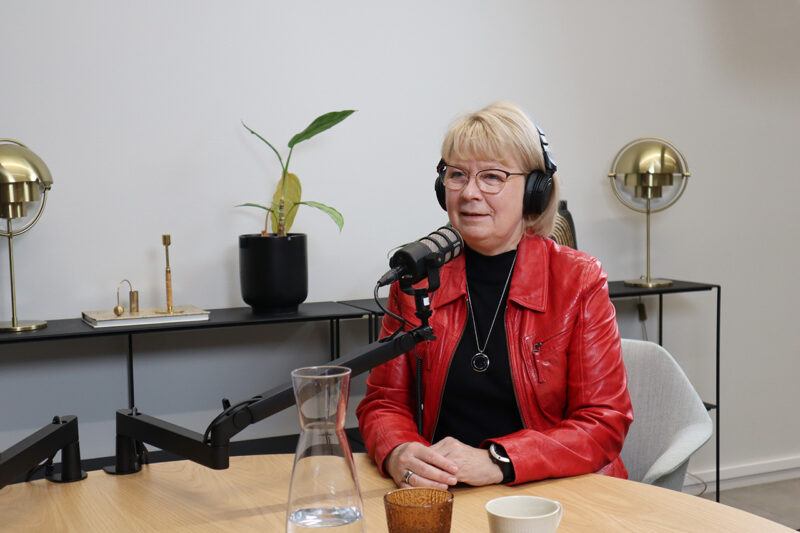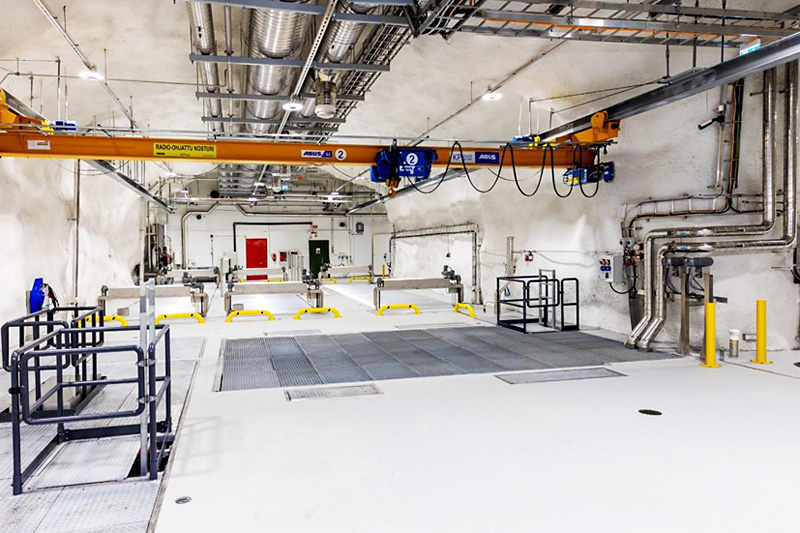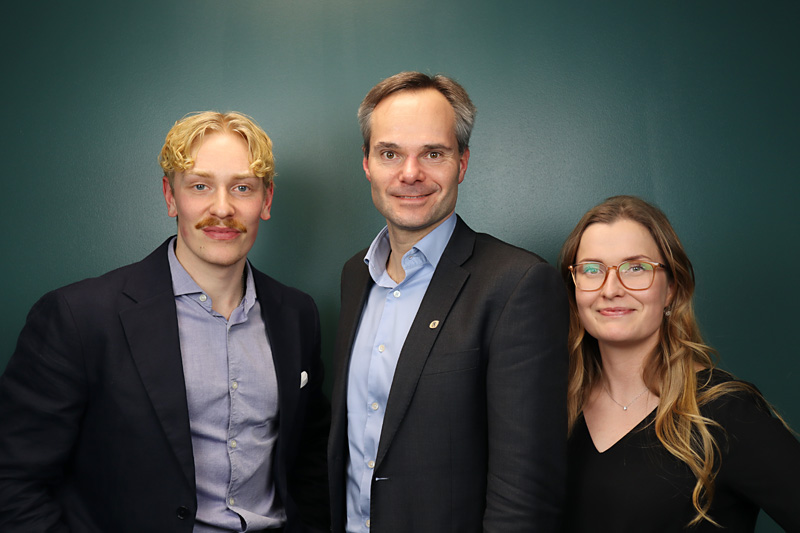The Current State of Nuclear Power and the Development of Small Modular Reactors

There is a growing demand for nuclear power, with particular interest in the development of modular small modular reactors (SMRs). Timo Okkonen, who has led nuclear power organizations and projects for over 35 years and now heads the consulting firm Kind Atom Oy, joins Panu Rahikka, Managing Director of Fimpec Consulting Oy, to discuss the current state of nuclear power, future prospects, opportunities, and challenges. Hosted by Maiju Aaltonen, this discussion is featured in Fimpec’s Kumppanit podcast.
Timo Okkonen brings a broad perspective to the nuclear power industry, with over 35 years of experience in expert and leadership roles across the sector, including positions at the Radiation and Nuclear Safety Authority (STUK), ABB Atom, the Finnish Safety and Chemicals Agency (Tukes), Inspecta, and Fennovoima. He currently leads Kind Atom, a company he founded, and serves on the board of Platom Oy, which addresses challenges in the nuclear power industry, and as an advisor to Vattenfall in Sweden.
Okkonen believes that nuclear power has been, and will continue to be, essential. In his view, it is a critical stabilizing force in the energy sector, providing a reliable source of baseload power.
“From a nuclear power perspective, the major change is in the general sentiment. As stability and responsibility have become more emphasized, nuclear power has gained more acceptance,” he summarizes the current situation.
Modular Small Modular Reactors Enable Scalability and Repeatability
Recently, there has been significant public attention on small modular reactors (SMRs), which are seen as a simpler alternative to large-scale nuclear power projects. Okkonen shares this view of SMRs’ potential but notes that development is occurring across all sizes of nuclear power plants—large, medium, and small. However, he believes that the key strengths of modular SMRs lie in their scalability and repeatability.
“Similar small plants can be produced in large numbers. This means that each project isn’t unique, as is the case with billion-dollar large-scale nuclear projects that are customized and one-of-a-kind. In the extreme, much of the work on SMRs could be done in a factory, with the reactor unit being installed on-site at the end. By shifting the focus from construction to installation, project predictability would improve.”
He cautions, however, that there is still a long way to go before SMRs are built in the same way as wind farms are today. Nonetheless, this is the goal, as there are many potential applications for modular SMRs.
“They can, of course, produce electricity, but the current market situation makes it difficult to do so profitably on the open market. I believe we will see combinations where heat and electricity are produced, or possibly just heat for urban needs. Hydrogen production also offers significant opportunities. The key point is that nuclear power can meet the needs of industrial production, urban heating, and the entire power grid,” Okkonen says.
The First Small Reactors Could Be Operational by 2035
According to Okkonen, predicting when new nuclear technology will become commercially available is challenging. Many factors influence the success of projects, despite high expectations and a more favorable attitude toward nuclear power.
“The first new units could be operational in Finland by the mid-2030s if everything goes well. Much depends on how the development of heat reactors progresses and how well they scale,” he predicts.
Profitability and Supply Chains Are the Biggest Challenges
Okkonen sees two key challenges in nuclear power construction: economics and supply chains. He says that issues related to safety, permitting, and technology are already well managed.
“Safety is, of course, the most important aspect, but we’ve learned a lot over the past 40–50 years, and today’s plants have multiple systems in place to ensure safe operation. Economics, on the other hand, is a tough nut to crack because the nuclear power sector is so capital-intensive and projects are often so large that they can tip companies over. This is where the government could offer some support.”
Okkonen suggests that while the industry does not need direct subsidies, loan guarantees, interest rate relief, and some form of assistance with project risk management could help get projects off the ground. He sees supply chains and building the necessary ecosystem as even bigger challenges. Fimpec Consulting’s Managing Director, Panu Rahikka, agrees.
“A leader of an energy company once told me that we need ten or more SMR units in Finland, not just one or two. This is crucial to building the expertise, infrastructure, and everything else the ecosystem requires,” Rahikka states.
“The client shouldn’t just be looking to acquire a reactor but should work with the supplier on how to deliver it. This is best achieved when the client’s representatives are involved in the project, progressing step by step from concept to design, construction preparation, and then construction. It’s important that all parties come to the table early on to see who can best complete the journey together,” Okkonen adds.
Social Acceptance Is Crucial
Another major issue is the social acceptance of nuclear power projects. The breakthrough of modular SMRs would represent a significant shift in this regard, as they would lead to the placement of nuclear plants in more locations and closer to populated areas.
“Especially for heat reactors, they can’t be built hundreds of kilometers away from users like large nuclear power plants that produce electricity. They will be located near district heating networks,” Rahikka explains.
Okkonen notes that this represents a shift to a new era, requiring a different approach.
“The importance of stakeholders is growing. Companies, suppliers, and regulators must be trustworthy and take local residents into account. There are good procedures for this in Finland. It’s also important to have multiple site options available. This way, there’s no need to force a location if a plant is not genuinely wanted there.”
Rahikka also highlights the example set by wind power projects. He notes that it’s important for local people to feel they benefit from the project.
“Wind power has succeeded in this in Finland. When the property taxes paid by wind farms don’t go far into the state treasury but benefit the local area, this has increased the social acceptance of wind power.”
Finland Is in Pole Position
Okkonen and Rahikka also discuss Finland’s potential in nuclear power construction in the Kumppanit podcast. Both believe Finland is in a leading position.
“Finland is in a way a pioneer. Around 40% of our electricity production comes from nuclear power. In Europe, the average is about 20%, and we also have recent experience in nuclear power construction,” Rahikka says.
“In addition, we are developing domestic technology in the heat reactor sector for the first time. In many respects, Finland is the best place to utilize nuclear power. Besides expertise, we’ve addressed nuclear waste issues, and our society is uniquely politically stable,” Okkonen adds.
However, he admits to being slightly concerned that if action is not taken now, there is a risk of falling behind in development.
“I think we’re at a point where it would be good for the government to provide incentives that would help companies take risks. Now is the time for boldness.”
Timo Okkonen and Panu Rahikka were guests on Fimpec’s Kumppanit podcast, hosted by Maiju Aaltonen (Hirvikallio).
Listen to Kumppanit Podcast Episode 10: Finland is in Pole Position for Nuclear Power Utilization. Please note that the podcast is available in Finnish only.
All Kumppanit Podcasts (in Finnish)


